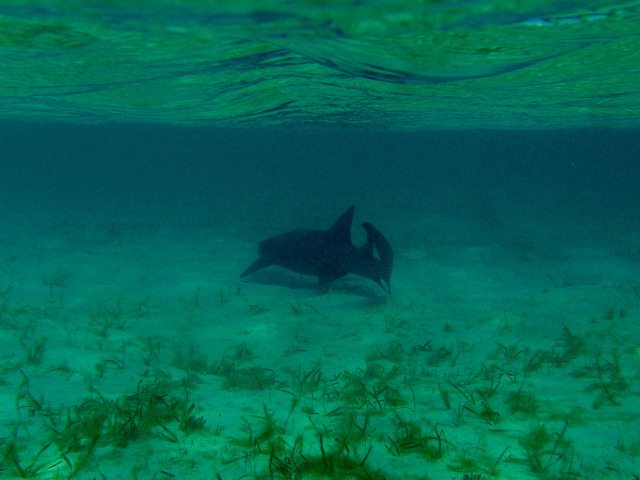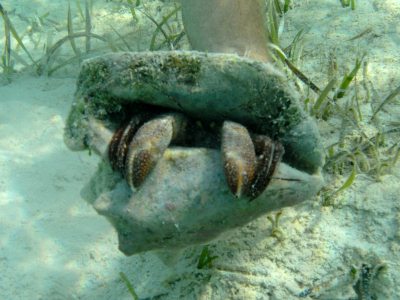Staniel Spuddle

|
Staniel and Thunderball Cay
Spuddle
  The bay
behind the marina and a close up of the Club Thunderball
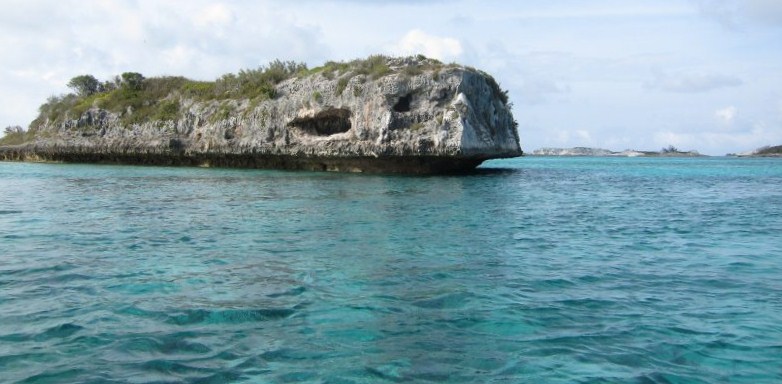 Thunderball
Cay
Sun out so hot, we took Baby Beez for a spuddle. Just across the bay from the marina is Thunderball Cay, made famous for its brief entry in the the James Bond movie of the same name. Forty five minutes into the now very tired film, but always nice to stare at the fit and firm frame of Sean Connery. There are no big turtles here, in fact zero because there is not enough fodder for them, so when we see the latest squeeze being towed along by one, perhaps a little poetic license to thrill and Bear's red starfish was actually bigger than hers. The thing I did love about the film was the opening number by Tom - get your knickers ready to toss, ladies - Jones. The original main title theme to Thunderball was entitled "Mr. Kiss Kiss, Bang Bang," (yuk) which was written by John Barry and Leslie Bricusse. The title was taken from an Italian journalist who in 1962 dubbed agent 007 as Mr. Kiss Kiss, Bang Bang. Barry had thought he couldn't write a song about a vague "Thunderball" term or the story of the film, so his song was a description of the character of James Bond. The song was originally recorded by Shirley Bassey, but was later re-recorded by Dionne Warwick. Both versions were not released until the 1990's. The song was removed from the title credits after United Artists requested that the theme song contain the title of the film in its lyrics. John Barry teamed up with lyricist Don Black and wrote "Thunderball" in a rush. Tom Jones, who sang the new theme song, fainted in the recording booth after singing the song's final, high note. Jones said of the final note, "I closed my eyes and I held the note for so long when I opened my eyes the room was spinning."
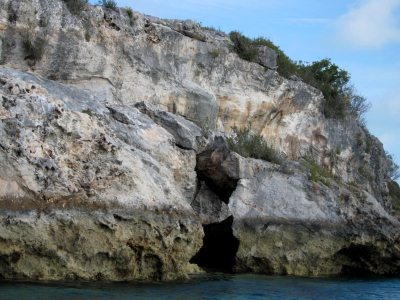  We circled the cay, looking at the cave, seen in the film and then went to the little beach next to the marina, I wanted to get up close and personal with the nurse sharks.
I left Bear near the beach (gouty ankle) looking at huge hermit crabs and flippered toward the first jetty in the marina. I cosied up to one shark and we both seemed to get on well. However..............................
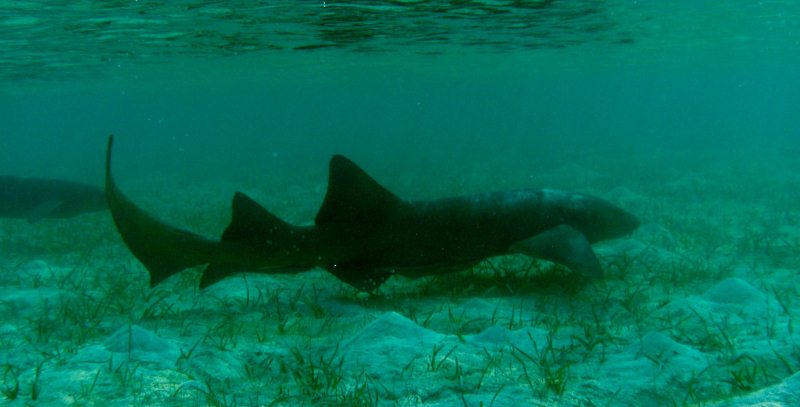
............. it called over one of its mates and I was not quite as sure as when we had our intimate moment....................................however....................................................................
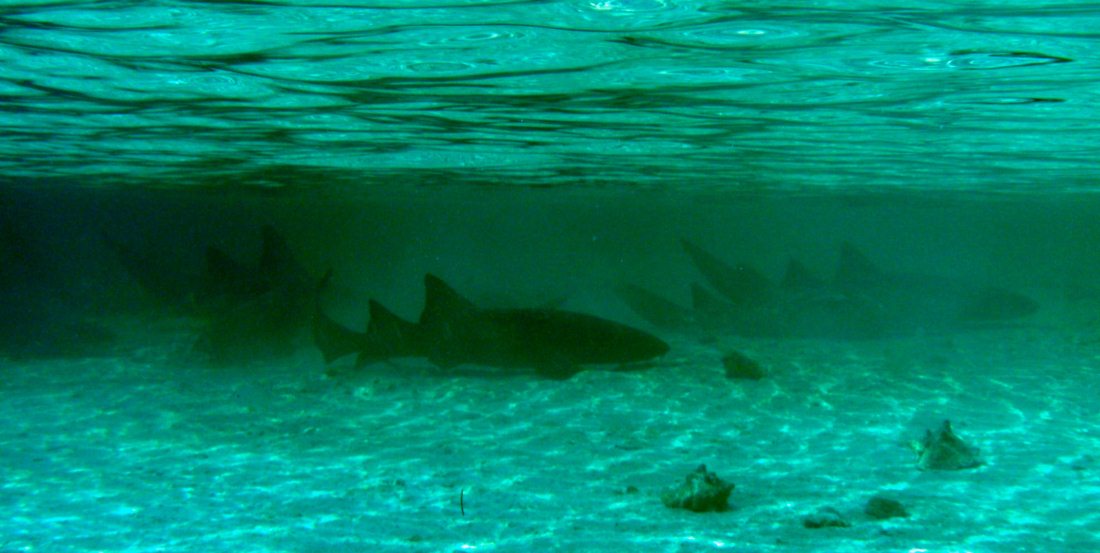
............seven, I felt was too much of a crowd and it was time to exit stage left.
The nurse shark or
Ginglymostoma cirratum,
actually
the name is a mix of Greek and Latin and means "curled, hinged mouth" to
describe this shark's somewhat puckered appearance. The origin of the
name "nurse shark" is unclear. It may come from the sucking sound they make when
hunting for prey in the sand, which vaguely resembles that of a nursing baby. Or
it may derive from an archaic word, nusse, meaning cat shark.
The most likely theory though is that the name comes from the Old English word
for sea-floor shark: hurse. Nurse sharks are
slow-moving bottom-dwellers and are, for the most part, harmless to humans.
However, they can be huge - up to 14 feet - and have very strong jaws filled
with thousands of tiny, serrated teeth, and will bite defensively if stepped on
or bothered by divers who assume they’re docile. They use their strong
jaws to crush and eat shellfish and even coral, but prefer to dine on fish,
shrimp, and squid. They are gray-brown and have distinctive tail fins that can
be up to one-fourth their total length. Unlike most other sharks, nurses are
smooth to the touch. Way to close, I'll take their word for it. Nurse sharks are
found in the warm, shallow waters of the western Atlantic and eastern Pacific
oceans. They are abundant throughout their range and have no special
conservation status, although the closeness of their habit to human activities
is putting pressure on the species. Type: Fish Diet: Carnivore Average life span in captivity: Up to 25 years Size: 7.5 to 9.75 ft Weight: 200 to 330 lbs Group name: School or shoal Fact: Nurse Sharks are nocturnal and will often rest on the sea floor during the day in groups of up to forty sharks, sometimes piled on top of each other. I had a surge in pulse with seven of them, I don't know the number but any feeling of chilliness left me for a small hot flush, or hot flash as the Americans say. I know my limits - but when I felt they were circling the wagons - time for me to slip along - back to Big Bear and his happy crabs. I must say in fact if there was an Olympic entry for speed snorkeling I would have been a stiff contender in the semi finals. I haven't been that breathless for a very long time. If I'm like this with a bunch of big friendly puppies, what will I be like with ones chaps with big, mean teeth.
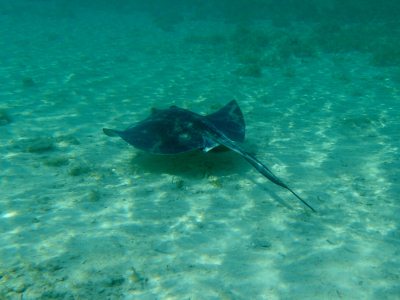  Quite comforted to see a stingray pass by and didn't mind a chap on the attack
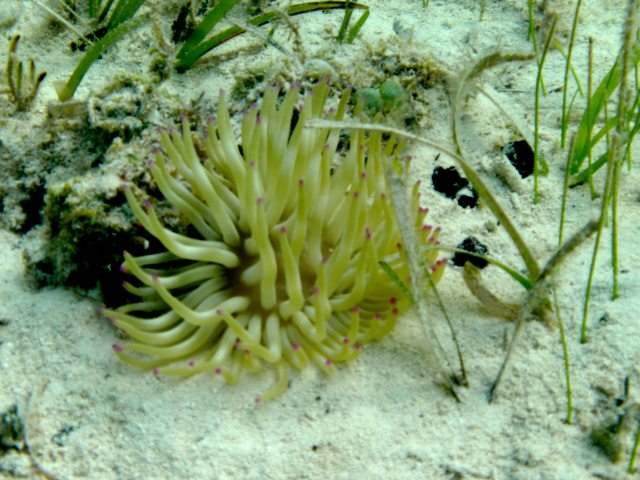 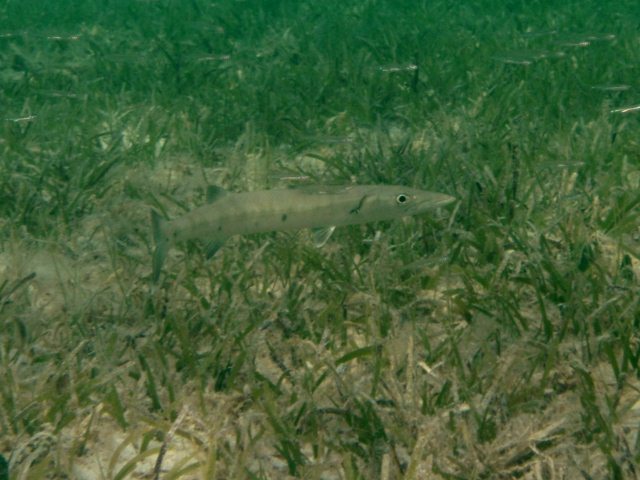
Bits and bobs in the water that was three feet deep a long way from shore
What a star to come out to pose, his shell weighed heavy
 Loved this chap with his posh sombrero
ALL IN ALL WHAT AN EXPERIENCE |
